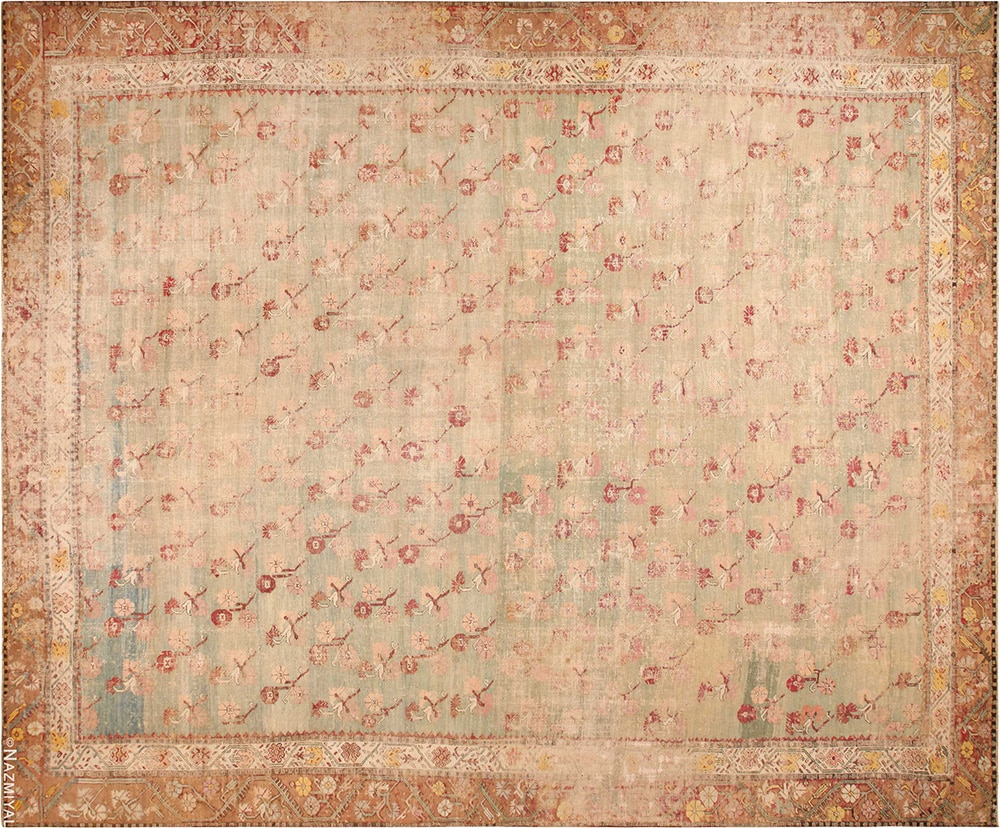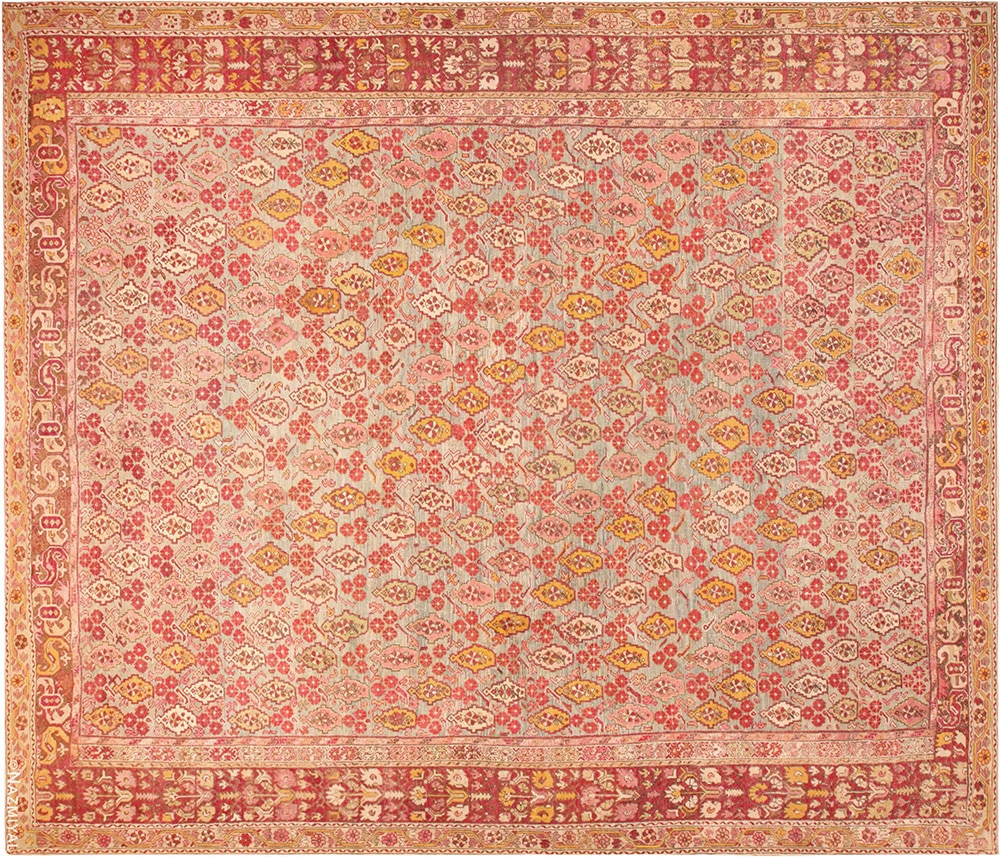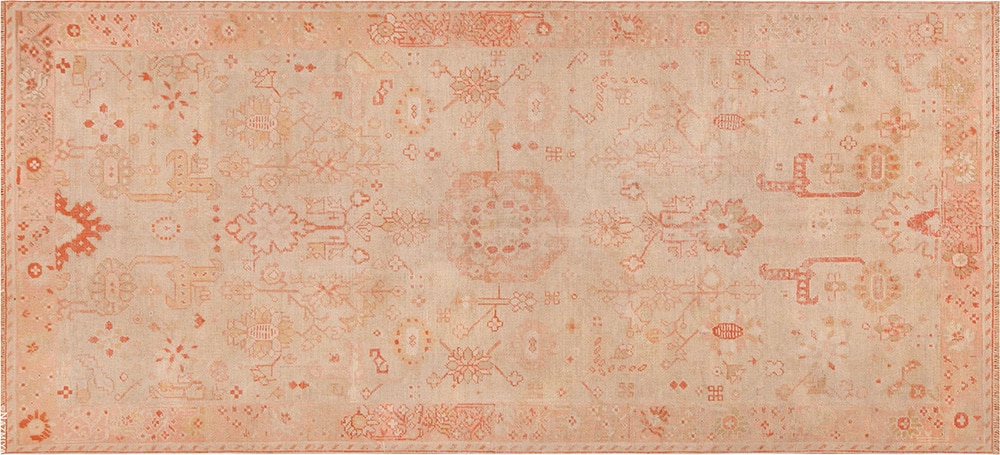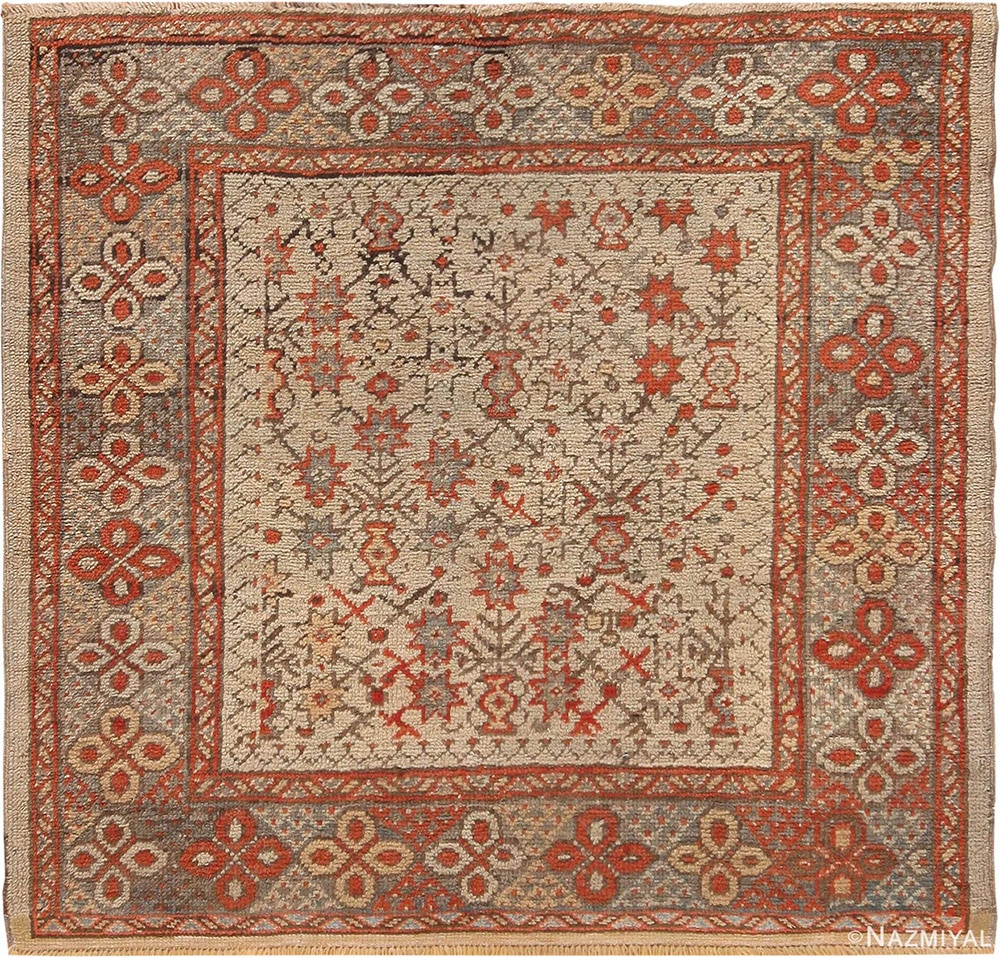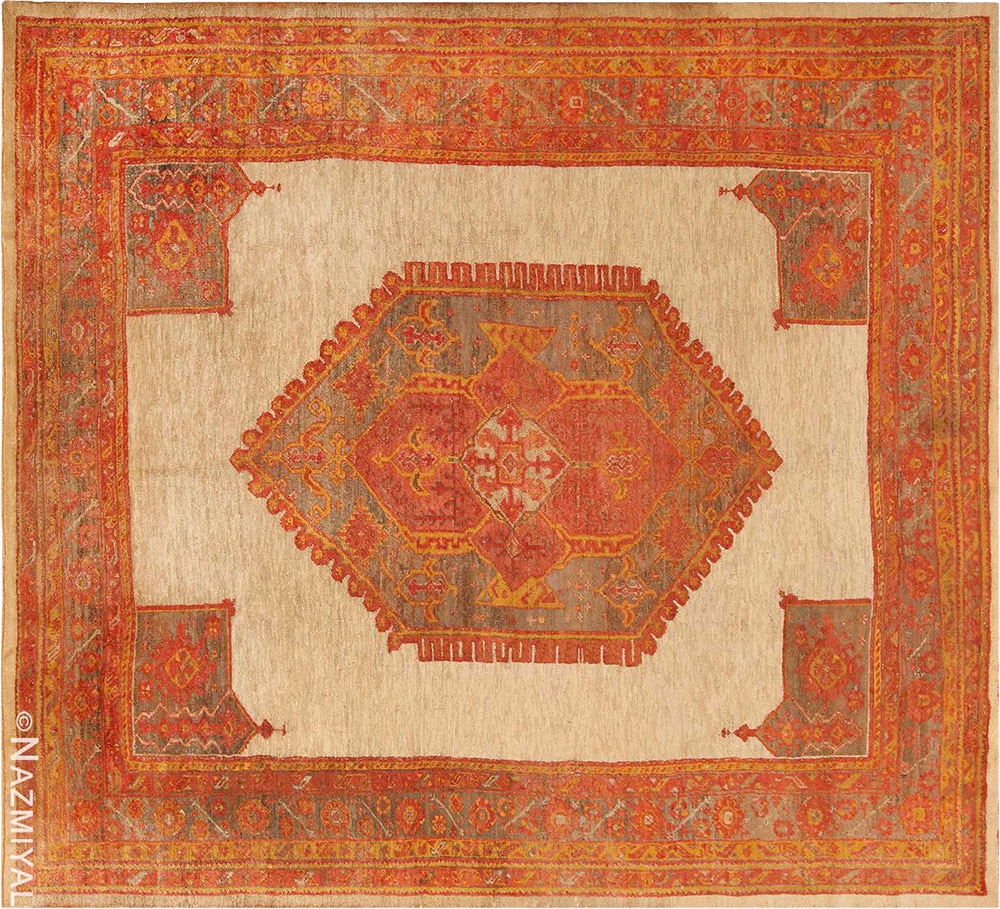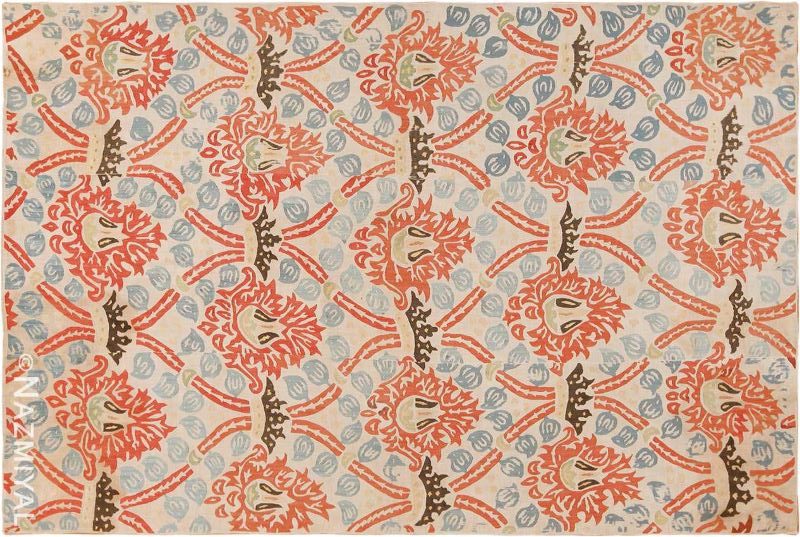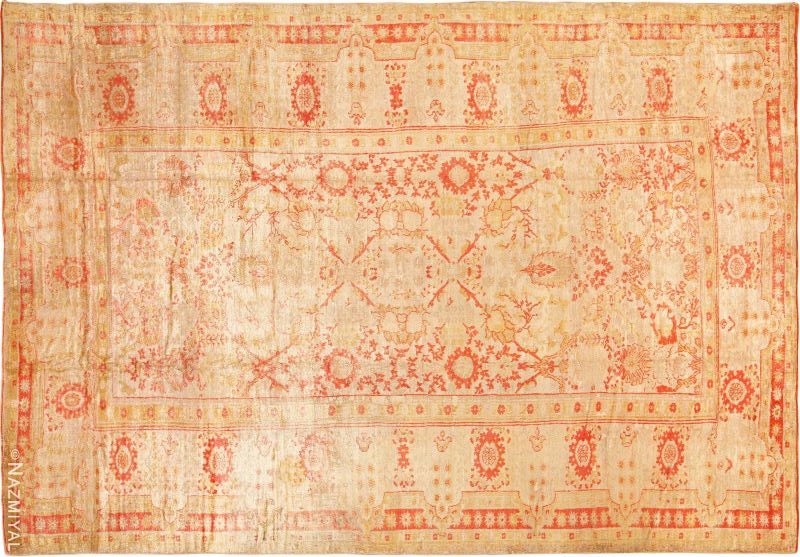The Rich History and Beauty of Anatolian Peninsula Rugs
View And Shop Our Collection Of: All Turkish Rugs | All Turkish Oushak Rugs | Turkish Bergama Rugs | Turkish Hereke Rugs | Turkish Kayseri Rugs | Turkish Konya Rugs | Turkish Angora Rugs | Turkish Sivas Rugs | Turkish Tuduc Rugs | Turkish Kars Rugs | Turkish Smyrna Rugs | Create Your Own Anatolian Based Design Custom Area Rug
For starters, where is Anatolia?
Anatolia, also known as Asia Minor, is a large peninsula located in Western Asia. It occupies the majority of modern-day Turkey, bordered by the Black Sea to the north, the Mediterranean Sea to the south, the Aegean Sea to the west, and the Armenian Highlands and Mesopotamia to the east. Anatolia is geographically significant as it serves as a bridge between Europe and Asia. Throughout history, Anatolia has been a crossroads of civilizations, witnessing the rise and fall of numerous ancient empires and playing a crucial role in regional trade and cultural exchange.
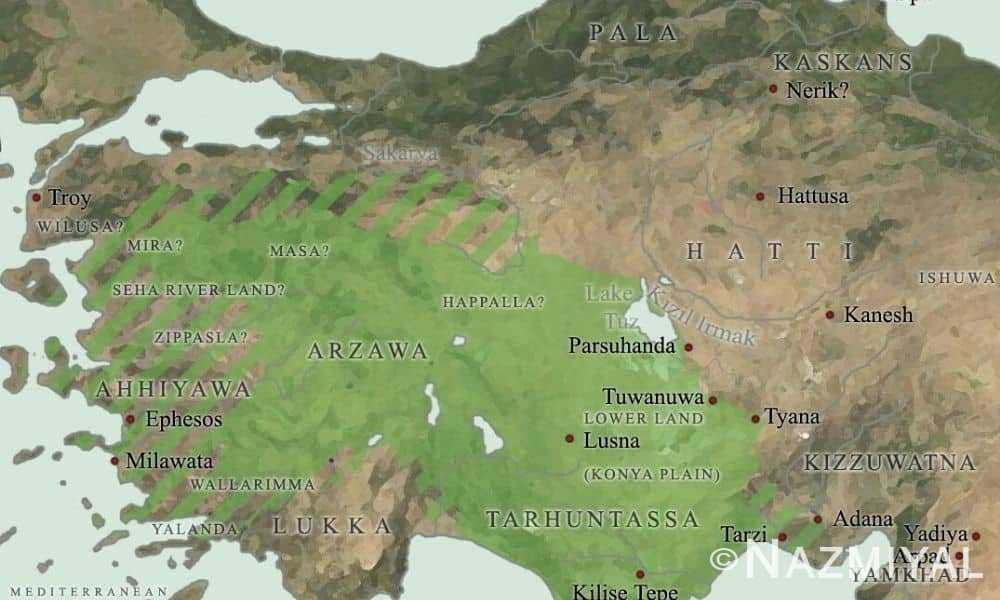
Map Of Anatolia / The Anatolian Peninsula
What are Anatolian rugs?
The term “Anatolian rugs” is used to describe pile area rugs that were woven in the area of Asia minor / the Anatolian Peninsula and its surrounding regions. Some of the oldest carpets in the world can be dated to this region. The intense colors and abstract designs, combined with traditional tribal symbols, makes them a favorite around the globe. Carpet weaving is a tradition that dates back to the earliest tribal cultures in the region. Let’s explore this fascinating and beautiful group of rugs a bit further.
What is the meaning of Anatolian rug?
An Anatolian rug, also known as a Turkish rug or carpet, is a type of textile flooring covering that originates from the region of Anatolia in Turkey. These rugs are highly regarded for their intricate and beautiful designs, as well as their craftsmanship. They have a rich history dating back many centuries and are considered a significant part of Turkish and Islamic art and culture.
Key characteristics of Anatolian rugs include:
- Designs: Anatolian rugs are known for their diverse and intricate designs, often featuring geometric patterns, floral motifs, and medallions. These designs can vary greatly depending on the specific region and the ethnic or cultural influences of the weavers.
- Materials: Traditional Anatolian rugs are typically made from high-quality materials, including wool, silk, or a combination of both. The type of material used can affect the rug’s texture, appearance, and durability.
- Weaving Techniques: Anatolian rugs are handwoven using various weaving techniques, such as the Turkish knot (Gördes knot) and the Persian knot (Senneh knot). The choice of knotting method can impact the rug’s overall quality and texture.
- Colors: These rugs often feature a wide range of colors, including vibrant reds, blues, greens, and earthy tones. Natural dyes were historically used to create these colors, which can give the rugs a unique and time-honored appearance.
- Regional Variations: Anatolian rugs come from different regions within Anatolia, and each region may have its distinct styles and characteristics. Some well-known types of Anatolian rugs include Oushak, Hereke, Kilim, and Konya rugs.
Anatolian rugs have been highly sought after by collectors and enthusiasts worldwide due to their artistic value and craftsmanship. They are not only used as functional floor coverings but are also prized as decorative pieces that can add warmth, color, and cultural significance to homes and spaces.
Where are Anatolian rugs made? Where is the Anatolian Peninsula?
The Anatolian Peninsula refers to a region in Western Asia that is known as the Anatolian peninsula or Anatolian plateau. It is the western-most point of the Asian continent. Now, it is considered a part of Turkey, and is sometimes called “Asian Turkey.” It is the place where Europe and Asia meet.
It is a diverse region in terms of terrain and climate. It is surrounded by the Black Sea, Mediterranean Sea, and the Aegean Sea. It ranges from a high central plateau with coastal plains to mountainous regions. It is a climate of extremes with hot summers and brutally cold winters. It is in these lands that ancient tribes and civilizations developed a culture with a diverse and rich material heritage.

The location of Anatolia.
Anatolia – A Crossroads of Civilization
Since prehistory, Anatolia has been a crossroads of civilization. It has been a region of frequent migration, travel, and conquest. Some of the oldest evidence of human existence can be found in caves of Anatolia. It is a region that is rich in natural resources and is in a strategic location to access both Europe and Asia. It is the most convenient route between the east and west.
The region known as Anatolia has been home to the Old Assyrian Empire, Hittites, Ionian Greeks, Mycenaean Greeks, and Phrygian empires. It is a land of ancient myth and legend. It has been occupied by the Romans, early Christians, Byzantines, and Jewish Populations. Anatolia has been a land of war and dispute. Each of these cultures left its mark on what would later develop into modern Turkish culture.
Anatolia would also see conquests by the Persians, Arabs, the Crusades, and Mongols. It would be home to the rise and fall of great empires, including the Seljuks and the Great Ottoman Empire. For the most part, the central area remained more stable, with the major conflicts occurring on the outskirts of the territory. These cultures intermixed and had an influence on the traditional crafts of the area.

Nomads of Anatolia
What is Anatolian style?
“Anatolian style” typically refers to a design or artistic aesthetic that is influenced by the cultural and artistic traditions of Anatolia, a historical region in Turkey. Anatolia has a rich and diverse heritage that encompasses various civilizations, including the Hittites, Phrygians, Lydians, Greeks, Romans, Byzantines, and Ottomans. As a result, the Anatolian style may draw inspiration from these different cultural and historical influences.
Key characteristics of Anatolian style may include:
- Geometric and Floral Patterns: Anatolian-style designs often incorporate intricate geometric patterns and floral motifs. These patterns may reflect the influence of Islamic art and the use of geometric shapes in Islamic architecture.
- Rich Color Palette: Anatolian-style artwork and textiles often feature a rich and vibrant color palette, including deep reds, blues, greens, and earthy tones. Natural dyes, such as those derived from plants, were historically used to achieve these colors.
- Traditional Craftsmanship: The Anatolian style often emphasizes traditional craftsmanship techniques, such as handwoven textiles, intricate embroidery, and detailed woodworking. These techniques are reflective of the region’s historical artisanal skills.
- Cultural Symbols: Designs in the Anatolian style may incorporate cultural symbols and motifs that are significant to the region’s history and heritage. These symbols can vary depending on the specific culture or civilization being represented.
- Eclecticism: Given Anatolia’s history as a crossroads of civilizations, the Anatolian style can be quite eclectic, blending elements from various cultures and time periods. This eclecticism is a hallmark of the region’s artistic and cultural heritage.
- Influence on Modern Design: The Anatolian style has influenced contemporary design in various fields, including interior design, fashion, and decorative arts. Elements of Anatolian design may be incorporated into modern products and spaces to create a fusion of traditional and contemporary aesthetics.
It’s important to note that Anatolian style is a broad and encompassing term that can vary depending on the specific context and the aspect of Anatolian culture being referenced. Whether in textiles, architecture, or visual arts, Anatolian style reflects the rich tapestry of history, culture, and artistry that characterizes the Anatolian region of Turkey.
Tribal Cultures and Anatolian Rugs
The climate of Anatolia is much harsher than one would expect. Many areas are steep slopes and unable to sustain agriculture. This led to the development of nomadic groups, some of which continue to live in the traditional lifestyle of their ancestors today. Most of the nomadic tribes are located in eastern Anatolia and migrate between the plains and mountains. It is estimated that at least 50,000 inhabitants still live in small, tribal villages. It is here that the story of Anatolian rugs begins.
The tribes that migrate throughout Anatolia include people of various ancestries and mixed cultures. Their isolation from the rest of the world allowed each of them to develop their own unique arts and culture. While there have been major occupations, such as the Ottoman Empire and Islamic cultures, many of these tribes remained isolated from these influences. This cultural isolation means that many of the rug patterns that we see in antique carpets from the area may be similar to those created by the ancient cultures that inhabited the area.
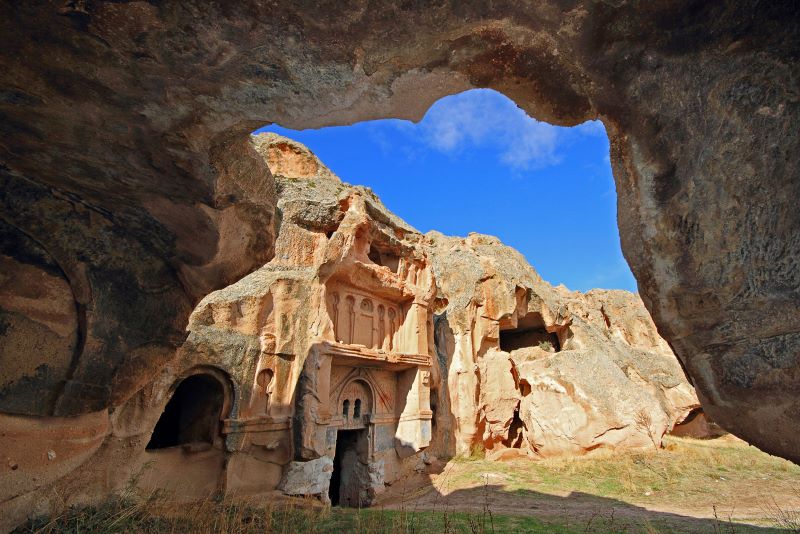
The beautiful terrain of Anatolia is unable to sustain architecture, and was home to many different tribes.
Designs and Patterns of Anatolian Rugs
Until the Trans-Anatolian Railway was completed in 1871, the world had not seen these beautiful works of art. When the railway was completed, it allowed the rest of the world to see them for the first time. The world fell in love with them, and they soon provided an additional source of income for the nomadic tribes.
As a group, it is often difficult to distinguish the work of one tribe from another, but they can easily be recognized as a regional group by their colors, texture, weaving techniques, and motifs. It is a region that is a melting pot of traditions, political alliances, religions, and languages. Within the designs, you can often see influences from the various cultures that have occupied the region. Sometimes, you will see hints of Byzantine, Islamic, Persian, or Mongolian art within the designs.
Although there are a few exceptions, many Anatolian rugs use the symmetrical, or Ghiordes, knot. Most are made from all wool that is sourced from local sheep. You will sometimes see an unusual color in the rug because of a locally available plant dye. On a rare occasion, you can find an exotic fiber such as goat, bear, camel, or ox. As a group, the designs, colors, materials, and techniques used to create these masterpieces are as varied as the people themselves.

The symmetrical Ghiordes Knot used in Anatolian rugs.
Anatolian tribal carpets are like a time capsule that gives us a glimpse into human history. That is one of the reasons why people love them so much today. They have a primitive quality and a character that lets you know that human hands created it. Each one is the culmination of hundreds, if not thousands of years of traditions passed down through song and stories.
Anatolian rugs are some of the most unique and beautiful rugs in the world. We encourage you to take a look around our collection and see if you find the one that would make the perfect addition to your Boho chic, eclectic, or modern tribal-inspired space.
What are Anatolian rugs typically made of?
Anatolian rugs, also known as Turkish rugs or carpets, are typically made from wool but you can find these area rugs in other types of high-quality and natural rug weaving materials, such as silk and sometimes cotton. The choice of area rug weaving materials can impact the rug’s texture, appearance, durability and price.
Browse a variety of antique Anatolian rugs and textiles:
This rug blog about the history of antique Anatolian rugs was published by Nazmiyal Antique Rugs.


